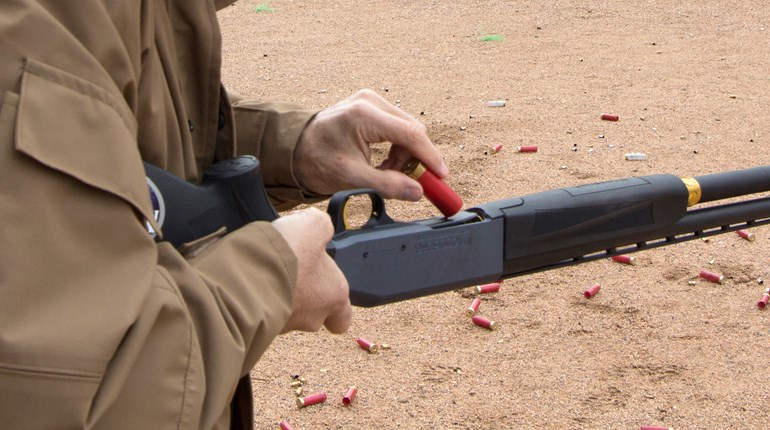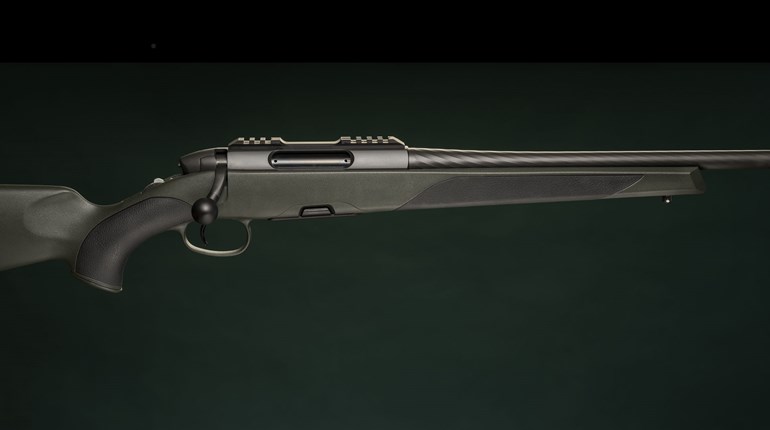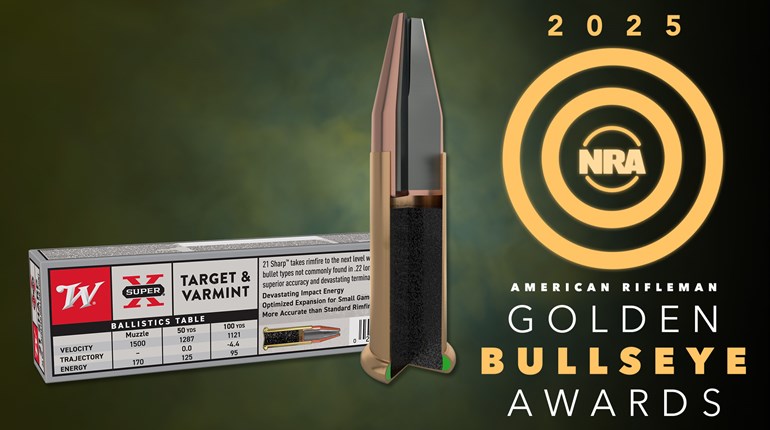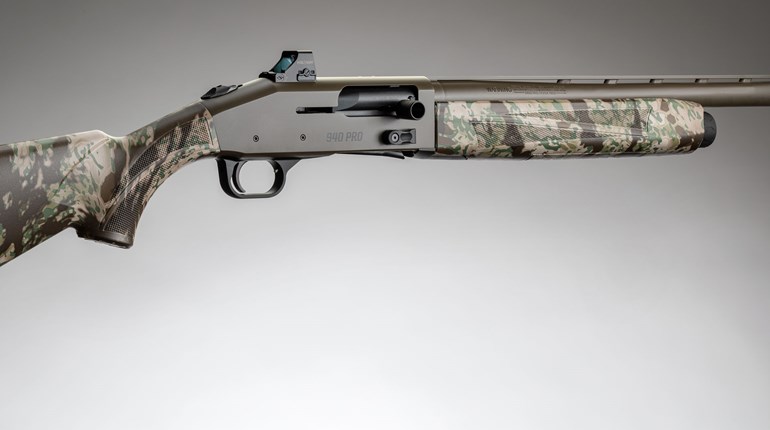
America, of course, was founded by individuals who understood they needed to take responsibility for their own safety, but today’s first-time gun buyers likely weren’t raised around guns. After swiping a credit card and passing a background check, these new gun owners are, no doubt, finding they have a lot to learn. One big thing they will need to do is develop and maintain the skills and mindset required to carry safely and effectively. Learning these skills takes time and proper instruction. (The NRA has literature and videos at NRAPublications.org, and a searchable database of quality gun courses located in every part of the country at NRAInstructors.org.)
The good news is, with instruction, training and an open mind, the carry mindset can be learned. During this process, a curious transformation in the individual often ensues: Once people obtain the knowledge and skills necessary to become self-reliant until help arrives, they don’t wish to return to dependency.
The Carry Mindset Breeds Responsible Citizens
NRA-certified instructors teach, as part of various courses, the discipline and restraint necessary to attain self-control during an emergency. The ability to respond to life-threatening situations with deadly force is a very maturing responsibility. Plenty of studies show that concealed-carry permit holders are statistically much less likely to commit crimes. Learning how to properly use and carry a gun for personal safety creates or builds upon a mindset of respect for others, responsibility, self-awareness and restraint.
Four Fundamentals of the Carry Mindset
1. Responsibility: Jane H. obtained a concealed-carry permit at age 55, after her husband passed away from cancer. Without her husband, she felt vulnerable, both alone in her home and while traveling. She is a mother and grandmother who now carries a gun in her purse when and where it is legal to do so. But before doing this, she learned that carrying such a tool requires more than just stashing it away and forgetting about it until some dreaded moment where she might need it. She realized that learning to carry and shoot is an ongoing responsibility.
“It’s like caring for a child,” Jane said. “You’ve got to know where it’s at and what condition it’s in at all times. Like one of my precious grandkids, you can’t just leave it somewhere or trust someone else with it. Certainly, a gun can be somewhat of a burden, but that’s the bargain for the advantages it brings.”
“To help form the carry mindset, you should get into certain good habits,” agreed NRA Education and Training Deputy Director John Howard. “Keep your gun in the same place when you take it off, for example. Little habits like that will create a routine so you’ll never misplace it.”
You’ll also find that added responsibility comes with added self-restraint. Jim G. started a new job in downtown Atlanta after college. “I obtained a CCW permit and carried a gun daily while delivering merchandise to convenience stores,” Jim said. “But after a while, an odd thing happened: I started bypassing the happy-hour bar scene after work, knowing I’d have to disarm myself before going inside. And so I found myself choosing lasting personal safety over temporary fun. Ultimately, the carry mindset not only made me safer, but a more productive and better version of myself.”
Jim says that he found that carrying responsibly instilled quiet confidence within him. “In my younger years, before I carried,” says Jim, “I could be hot-headed—probably, I was lacking true self-confidence. But when I started carrying, I found I could easily let silly slights go and simply walk away from confrontations. It’s just part of the mindset you’ll find easy to adopt if you carry.”
Howard warns that confidence instilled by the carry mindset should never be confused with bravado. “If you wouldn’t go somewhere before carrying a gun, you shouldn’t go there while carrying a gun,” says Howard. “Dangerous places are still dangerous, with or without a gun.” Deadly force should only be used as a last resort when death or grievous injury is imminent; the carry mindset suggests you do everything possible to avoid arriving at that point in the first place.
It also necessitates being able to act responsibly and decisively in the face of pressure. To do this, you must continually self-evaluate your capabilities. This means determining if you are mentally capable of being ready, able and willing to make swift, decisive decisions about whether to use lethal force, and to accept the moral and potential legal consequences of doing so. A responsible carry practitioner continually seeks advanced instruction and continued education—maintenance of the mindset—to better prepare themselves each day.
2. Practice and Training: Practice for concealed carry is specialized and should continually be honed, as handgun shooting is a perishable skill that will degrade over time, especially if left idle. Gun training, like any other discipline, is never mastered, but only improved. Furthermore, as proven by empirical evidence, when under duress, humans rarely rise to the occasion, but more often fall to their level of training; hence, good training is vital to performing under pressure. Carriers should practice until the fundamentals of shooting become second nature, so that they only think about the current situation and how best to handle it, rather than about how to operate the gun.
Many materials created and curated by the NRA teach the fundamentals of concealed-carry tactics. They should be consulted and studied before going to the range, so that bad habits are not created and reinforced. Professional concealed-carry instructors can be found in virtually every zip code; choose a reputable one and attend a class, as it will unlock theories, practices and techniques critical to refining the carry mindset.
For example, one bad habit that new carriers commonly make is to spend the vast majority of their practice time at the target range honing accuracy by shooting repeatedly at a stationary bullseye from a stationary position.
“Don’t just stand there,” says Special Forces veteran and firearms instructor Jack Nevils. “Doing so will often get you killed. You’ve got to be able to move and find cover while shooting.”
In reality, after the fundamentals of accuracy are learned, much practice with the carry gun should be devoted to learning to shoot from the draw, while moving, one-handed, from cover and while in various positions. That’s because any study of real-world self-defense encounters reveal few instances where a defender has time to leisurely draw, aim and fire in a measured manner, as if they were on a firing line at the range. Odds are, if you must use your gun, you will be in close contact with an attacker, often fighting, running or protecting someone else. There will be unimaginable stress. Therefore, the best training should imitate this.
The problem is, reality-based situations and stress are nearly impossible to create alone on the range. That is why force-on-force training, or training against an instructor/adversary using simulated firearms, is highly recommended. Not only will force-on-force training highlight your shortcomings in gun handling and technique, but it will require you to think about your situation and how to best overcome it while under stress.
Through copious training, you’ll soon learn specific gear that works for you, including your style of dress, guns, holsters, shooting techniques and carry positions. “Don’t be afraid to try new gear and techniques, so that you can develop what works best for you,” says Howard.
3. Awareness: Perhaps the greatest asset to a concealed-carry practitioner, and a key component of the carry mindset, is the discipline of awareness. Intuition alone can keep you out of trouble, or at least give you a few vital seconds of forewarning of coming trouble; however, it’s not easy to always be aware, especially in times of social interaction, work, focus on kids and, now especially, while under the spell of a smartphone.
The father of the modern handgun shooting technique, Col. Jeff Cooper, stressed situational awareness, or knowing what’s going on around you, at all times. Cooper devised a color-coded system for levels of awareness to more easily teach his students. They are:

White: Unaware. (This could be a person walking down a sidewalk, head down, fully focused on a cell phone. Or it could be when you just wake up in the morning or when you are at a friend’s house watching TV.) This level of non-awareness is potentially deadly; it invites victimhood, and can turn passive dangers, such as a missing manhole cover, into perilous pitfalls.
Yellow: Situationally aware. This is the state of awareness mandated by the carry mindset; for example, in this stage, you’ll notice shadowy areas in a garage where carjackers could lurk; you’ll note various people as they move about; you’ll constantly scan for danger and potential escape routes; you’ll know your location and directions to your destination; you’ll read traffic patterns; and you’ll make eye contact with people to let them know you are aware—this, in and of itself, can dissuade many potential criminals from troubling you.
Orange: Threat identified. This is the awareness level when you have identified a specific threat; for example, perhaps you are walking along in the yellow state of awareness when, suddenly, you see a large dog racing down the street, dragging a chain. The dog is out of control and snarling viciously. In this instance, your awareness level should shift from yellow to orange, and you should quickly begin finding and weighing your options for fighting or evasion.
Red: Ready to fight. This is the awareness level when you are ready to fight. At this level, your hands should be cleared of objects so you can fight or shoot if you must, and you should be looking for vulnerabilities in your adversary.
Over time, these color codes will help you quickly categorize your level of awareness and where it should be in given scenarios.
4. Post-Defensive Mindset: Some concealed-carry permit holders mistakenly believe that, if they fire their gun in defense of life, the law will naturally take their side. But this is not always the case. Therefore, after a defensive shooting, the carry mindset involves switching from active defense of your life to active defense of your legal standing. Strongly consider that, despite your belief that you acted legally, anything you say and do can be used against you in court. Therefore, it is wise to say as little as possible in the moments following an altercation, when your adrenaline is still pumping and your understanding of exactly what happened may still be incomplete. Concealed carriers should know this beforehand and develop a post-defensive strategy that puts law enforcement at ease, yet also protects their legal rights.
For example, when police arrive and ask questions, the best strategy may be to say something like: “I was forced to use my firearm in self-defense. I will help you in any way possible, after I seek counsel. For now, here is my ID. My firearm is in my holster behind my right hip.”
Maintaining the Mindset in Practice and Politics
After taking responsibility for yourself by buying a firearm and acquiring the proper attitude, skills and knowledge necessary for responsible concealed carry, you can improve your carry mindset by seeking advanced theory, techniques and gear. This is strongly encouraged. You may also realize that not only are you the sole defender of yourself and your family, but also that you are actually more capable of performing this vital duty, and in a better position to do so, than any third party. When this transformation happens, it’s unlikely you’ll willingly relinquish your newfound independence.
Indeed, once the carry mindset is fully formed, you will fear not so much the criminal, nor the weighty responsibility you’ve assumed, but rather the politician who would strip your liberty and your safety from you with a mere stroke of a pen. This is a major reason why the Second Amendment is often the single-most important issue for Americans come election day.

Carry Gear
Spare Magazine: Serious concealed carriers advocate carrying a spare magazine in case you need more ammo or to deal with some types of magazine stoppages. So consider keeping a spare in a pouch or clip on your belt, such as the NeoMag belt clip.
• Flashlight: A flashlight should be considered essential for anyone carrying a firearm. Many defensive force encounters occur in low light and require the defender to properly identify any assailants. While quality flashlights from brands such as SureFire are great, even inexpensive pen lights could work.
• Pepper Spray: Pepper spray is not meant to replace your firearm, but gives you a less-than-lethal option, or any option, in places where your concealed handgun is forbidden. The PepperBlaster from Kimber is a good choice.
• Night Sights: Tritium sights, like Trijicon’s glow-in-the-dark Night Sights, allow you to aim in low light. Big Dot night sights from XS are very fast, visible and surprisingly accurate. Holographic sights from EOTECH make shot acquisition fast in dim light. Laser sights can also get you on target fast and help to dissuade an attacker.
• Ammo: You’ll need two types of ammo: Inexpensive practice ammo for the range and premium self-defense ammo to keep in your gun during use. Except as an absolute necessity, do not use practice ammo for concealed carry, as it is inferior for self-defense. Good choices for defense ammo include Federal HST, Winchester’s Defender, Speer Gold Dot, Hornady Critical Defense and Barnes Tac XPD.


































